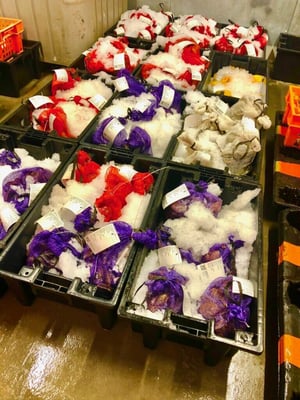Although BlueTrace software is great, the key to success is having folks like Kam Kim of Newport News, VA on the team.
Meet Kam: Farmer and Fisherman
Although BlueTrace software is great, the key to success is having folks like Kam Kim of ...
Insurance: Recordkeeping Matters
Below is a nice description of the new ELAP insurance program from the East Coast ...
Printers & Supply Chains
Supply Chains are the lifeblood of our economy. From how a shellfish gets from the ...
Tell Your Story
We continue to hear amazing stories from farmers.
Virtual Tradeshow
We did a virtual tradeshow with the East Coast Shellfish Growers Association. Over 90 ...
Good News from our Clients
The Aquaculture North America just published it's latest magazine, and our clients are in ...
Working with Distributors
Almost every farm starts out selling to local restaurants, but as they scale distributors ...
Shellfish Tagging: It Works
We started thinking about shellfish tagging about a year ago. We were watching
Don't Share your Data with a Competitor
When you work with us, your data is your data and we don't share it with anyone. You can ...
Zooming and Filtering: The Latest on Oyster Tracker
Despite all the craziness, our team has been focused on what we can control: improving ...

 Almost every farm starts out selling to local restaurants, but as they scale distributors (aka wholesalers) play an increasingly important role. You will make more money per shell at a restaurant, but there is a limit to how much restaurants can buy. If you are producing more than a few local restaurants and some consumers can absorb, you are probably going to need to work with distributors. We've been talking to a lot of distributors lately and here are some of the things farmers should know.
Almost every farm starts out selling to local restaurants, but as they scale distributors (aka wholesalers) play an increasingly important role. You will make more money per shell at a restaurant, but there is a limit to how much restaurants can buy. If you are producing more than a few local restaurants and some consumers can absorb, you are probably going to need to work with distributors. We've been talking to a lot of distributors lately and here are some of the things farmers should know..png?width=2048&name=Image%20from%20iOS%20(25).png)
